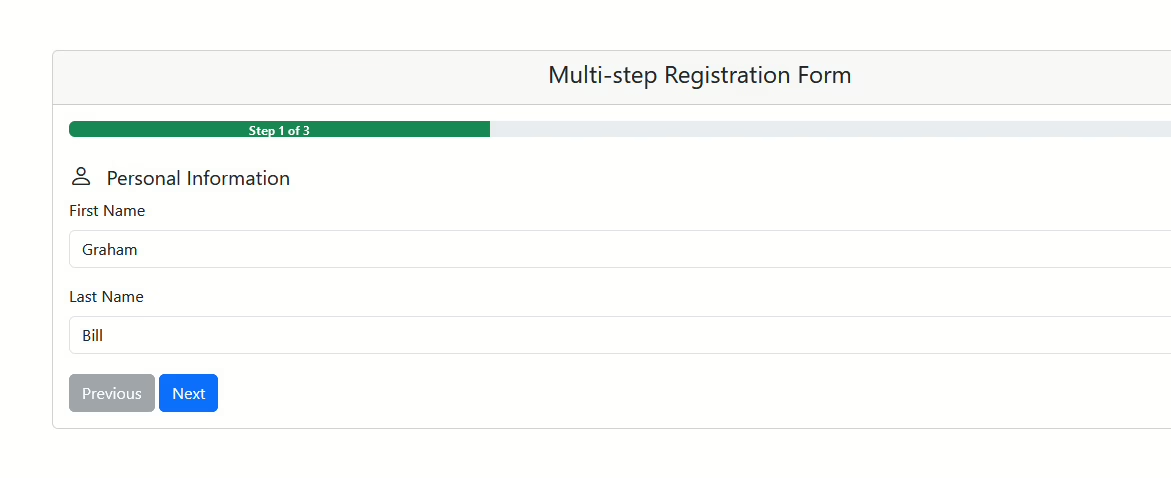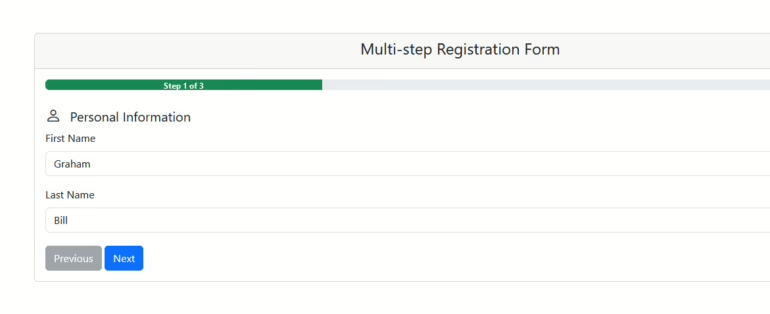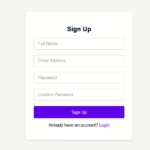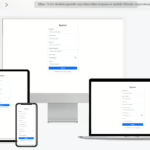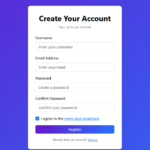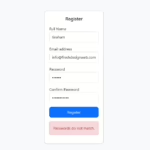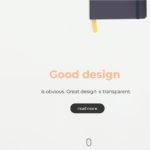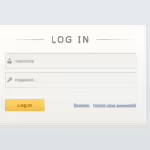A multi-step sign-up form is a key tool use by many firms and sites to get user info well. Instead of a one-page form, these multi-step forms split the sign-up steps into smaller, easy parts. This way is nice to users and can boost sign-ups by keeping users from feeling too much at once. This piece will guide you on multi-step sign-up forms, their good points, top ways to use them, problems, and tech used to make them.
What is a Multi-step Sign-up Form?
A multi-step sign-up form breaks down the sign-up task into clear parts or steps. Rather than having users fill in all details on one page, it sets out each step to gather specific bits of data, like personal info, contact info, and likes. This step-by-step method helps users by cutting down the thinking work and making the whole thing seem easier to handle.
Good Points of Using a Multi-step Sign-up Form
Better User Feel
When breaking up the sign-up steps, the task won’t seem as big. If people can just take it one step at a time, they’ll most likely fill out the whole form.
More People Sign Up
When folks don’t see the whole form right away, it won’t quit as fast. Keeping them in the loop with signs of progress and a direct path shows good results in getting more sign-ups.
Clear Data Gathering
With split-step forms, companies can get more exact data. Each step can set to ask for the right info, helping in easy handling and review of the data collected.
Fewer Mistakes
When users look at one part at a time, it tend to make fewer errors. Forms with many steps also let users fix their mistakes right away, helping them before it move to the next part.
Main Parts of a Step-by-Step Sign-up Form
Making a good multi-step sign-up form needs a few crucial parts:
Step-by-Step Layout
The form is split into clear parts that guide the user to finish the whole sign-up process. Usual steps are personal info, contact info, choices, and check.
Show of Progress
A big part of a multi-step sign-up form is a show of progress. It tells the user how much it have done and how much is left, giving them comfort and pushing them to finish the form.
Field Grouping and Easy Flow
To make it better for users, it’s key to put linked fields close in each step. For example, the first step might take simple info like name and email, while the next step looks at choices and settings. This clear way helps users get why each part is there.
Good Rules for Making Multi-step Sign-up Forms
Make It Easy and Nice for Users
One key part of any form is to keep it easy. Multi-step forms need to stay clean, short, and free from things that are not needed. Users should not feel lost about the info it need to give.
Put Same Info Close
Ensure that each part of the form only seeks info that fits together. For instance, in the first part, ask for the user’s name and email. Then, in the next part, ask for where to send stuff and how it will pay. Putting same info close makes the steps feel right and smooth.
Show Steps Clearly
In forms with many steps, it’s key to make progress signs easy to see and clear. It let users know where it are, and how far it need to go. This can lower worry and stop them from giving up.
Keep Few Must-Fill Fields
It’s good to ask for needed info, but too many must-fill fields can make users feel overwhelmed. Try to ask only for what you really need to get the forms filled out.
Make Moving Easy
Users should always be able to tell how to go from one step to the next. Offer simple ways to move, like “Back” buttons. This way, users can fix things without having to start over.
Problems and Fixes
Dealing with Form Checks
One big problem with forms that have many steps is checking if the info is right. With lots of fields over several steps, it’s key to have checks that tell users right away if something’s wrong. This lets people fix mistakes quick, not after it send it in.
- Fix: Make sure to show clear and fast feedback for mistakes by using inline checks. Change wrong fields to the color red and give a useful message to help fix them.
Lowering Drop-Out Rates
A big risk with forms that have many steps is that people might leave before it are done. If it hit errors, get lost, or don’t see a reason to keep going, it might not finish.
- Fix: Make it easy and give rewards for finishing the form. Letting users see how far they’ve come or showing a recap of what they’ve put in can help push them to complete it.
Tools and Tech for Making Step-by-Step Sign-Up Forms
There are many tools and tech ways out there to help you make good step-by-step sign-up forms. If you are a maker or own a business, it’s key to know what tools you need.
JavaScript and Web Frameworks
JavaScript is the top pick for making fun, live step-by-step forms. Using stuff like the jQuery library or React or Angular frameworks lets you make good, smooth forms that change well to all screen sizes.
For example: You could use a JavaScript tool like Formwizard or Stepform to make step-by-step forms easy and make them better for the people who use them.
CMS Add-ons and Ready-made Options
If you don’t code or need a fast fix, many content handling systems (CMS) have add-ons or ready-made choices for multi-step forms. For example, WordPress has add-ons like WPForms and Formidable Forms that let you make hard forms with no need to code.
Free Code Libraries
For people who code and want to set things their own way, free code libraries like React Multi-step Form or Vue.js can changed to fit exact project needs.
WordPress Add-ons
For folks using WordPress, many add-ons help you easily make multi-step forms. Gravity Forms and Contact Form 7 are good picks to make detailed and quick-to-answer sign-up forms with step-by-step uses.
Free Code Places
For coders who like to make and change forms as it wish, free code spots like Formvalidation or React-step-form make it simple to add forms with many steps to any web work.
Conclusion: Improving User Experience with Multi-step Registration Forms
In the end, using multi-step sign-up forms is key to better user feel and higher sign-up rates. By splitting the form into smaller, easy steps, companies can make a smooth, easy-to-use process that helps users finish it. Follow the top tips, dodge the usual traps, and use the right tools, and you can make a multi-step sign-up form that fits your goals and gives a good experience for your users.

